Planetary Probes
- Mercury
- Venus
- Mars
- Outer Planets
- Satellites
Space Probes
SPACE PROBES
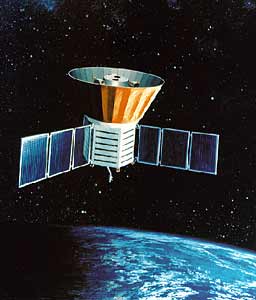 COSMIC BACKGROUND EXPLORER (COBE)
COSMIC BACKGROUND EXPLORER (COBE)
The Cosmic Background Explorer (COBE) was launched on November 18, 1989. Its mission was to study the microwave sky in order to detect radiation emitted by the Big Bang. Scientists have been very excited about the information from this probe because they believe it has actually peered back 15 billion years in time! While surveying the sky in microwave wavelengths, COBE has transmitted evidence which supports the Big Bang Theory of the creation of the universe. This cosmological event is believed to have occurred 15 billion years ago.
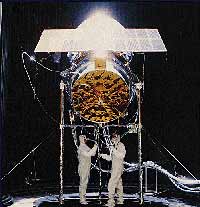 INFRARED ASTRONOMY SATELLITE (IRAS)
INFRARED ASTRONOMY SATELLITE (IRAS)
The Infrared Astronomical Satellite (IRAS) was a joint scientific project sponsored by the United Kingdom, the United States, and the Netherlands. IRAS was launched in January of 1983 and ended its mission 10 months later. IRAS' mission was to map the entire sky at infrared wavelengths. It was equipped with a special infrared telescope to scan the sky.
IRAS was the first satellite to discover a comet. The comet IRAS-Araki-Alcock was named for the probe and two co-discovering astronomers. During its lifespan, IRAS observed 20,000 galaxies, 130,000 stars and 90,000 other space objects and star clusters. IRAS detectors found a disk of dusty material and fine rock around the star Vega, which may be an early stage in the formation of a new solar system. IRAS' most famous discovery was that of a new type of galaxy, a starburst galaxy. In starburst galaxies, new stars are forming more rapidly than in other types of galaxies.
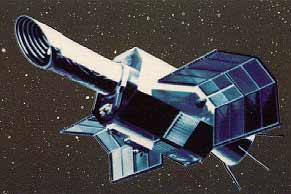 INTERNATIONAL ULTRAVIOLET EXPLORER
INTERNATIONAL ULTRAVIOLET EXPLORER
NASA, the European Space Agency (ESA), and the United Kingdom worked together on the International Ultraviolet Explorer (IUE) which was launched on July 26, 1978. The satellite was originally expected to have only a three- to five-year lifetime, but it was successfully used to study the universe in the ultraviolet portion of the electromagnetic spectrum for more than 17 years. It was shut down on September 30, 1996.
IUE produced more published scientific papers than any other satellite. It provided information about physical conditions in the central regions of distant galaxies that may contain black holes. It also provided scientists with more knowledge of the physical conditions in very hot stars, the effect of solar winds on the atmospheres of the planets in our solar system and the loss of mass from stars when stellar winds and flares occur.
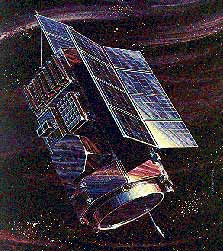 HEAO SATELLITE SERIES
HEAO SATELLITE SERIES
The first of three High Energy Astrophysical Observatories (HEAO-1) was launched by NASA in August of 1977. It was primarily a survey mission designed to scan and map the universe using X-rays. After six months, the entire sky had been observed. In January of 1979, the systems were shut down and HEAO-1 drifted in a decaying orbit until it burned up on re-entry into the Earth's atmosphere.
The second and third HEAO missions continued making images of, and studying various sources of, X-rays and gamma-rays in the sky.
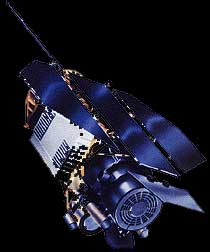 RÖNTGEN SATELLITE (ROSAT)
RÖNTGEN SATELLITE (ROSAT)
The ROSAT (Röntgen Satellite) Earth-orbiting X-ray observatory is an international mission. Its objectives include studying X-rays given off by the coronae of stars and locating and mapping X-rays given off by the remains of supernovae occurring in the Milky Way galaxy. The satellite was launched in June of 1990 and is now in an extended mission.
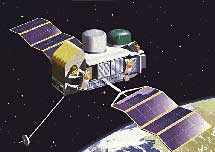 COMPTON GAMMA-RAY OBSERVATORY (CGRO)
COMPTON GAMMA-RAY OBSERVATORY (CGRO)
The Compton Gamma-Ray Observatory was launched April 7, 1991. It is the version of the Hubble Space Telescope that detects gamma-ray emissions. Its mission is to study gamma-ray emissions in not only our galaxy, but other galaxies beyond ours, and to investigate how neutron stars and black holes change over time. The Compton Observatory is expected to operate and provide scientists with information for 10 years. In order to accomplish this goal, the probe will be reboosted in 1997. Without this, the CGRO would fall back into the Earth's atmosphere where it would burn up upon re-entry. Interestingly, the observatory was scrapped anyway due to a failed gyroscope. It was officially deorbited on June 4, 2000.
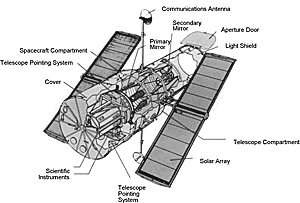 HUBBLE SPACE TELESCOPE (HST)
HUBBLE SPACE TELESCOPE (HST)
Deployed April 25, 1990, from the space shuttle Discovery, Hubble is one of the largest and most complex satellites ever built. Hubble's deployment culminated more than 20 years of research by NASA and other scientists. The telescope is named for American astronomer Edwin P. Hubble, who first discovered that countless island cities of stars and galaxies dwell far beyond our Milky Way.
But NASA didn't launch the telescope into space to get closer to the stars. Hubble barely skims the Earth's atmosphere, orbiting just 380 miles above our planet. The nearest star, our sun, is 258,000 times farther away.
Hubble is in space because it can see the universe more clearly than we can from Earth. Looking at the heavens through a ground-based telescope is like trying to identify someone at poolside from the bottom of a swimming pool. Our vision is blurred. That's because we live at the bottom of the Earth's atmosphere, an ocean of air that smears and scatters starlight. That's why stars twinkle.
Scientists have known for several years that our atmosphere obscures and distorts light. The scientists who pioneered rocketry decades ago concluded that the best view of the universe is from above the Earth's atmosphere.
With Hubble, astronomers are getting a clearer picture of the universe. The telescope's stunning photos are showing the world about the wonders of space. Many of the world's foremost astronomers are using Hubble to probe the horizons of space and time. Designed to last 15 years, Hubble is providing intriguing new clues to monster black holes, the birth of galaxies, and planetary systems around stars.
To provide astronomers with the latest Hubble data, the Earth-circling observatory must be maintained by hundreds of scientists, engineers, and computer programmers at the Space Telescope Science Institute in Baltimore, MD, and the Goddard Space Flight Center in Greenbelt, MD.
 CHANDRA X-RAY OBSERVATORY
CHANDRA X-RAY OBSERVATORY
The Chandra X-Ray Observatory was launched on July 23, 1999. It is the third of NASA's Great Observatories and examines the x-ray portion of the electromagnetic spectrum. Prior to sending the Chandra X-Ray Observatory, in 1978, NASA launched the first imaging X-ray telescope, Einstein (HEAO-2), into orbit. And in 1999, when construction was completed on the Chandra X-Ray Observatory, it was launched into orbit, originally expected to last only 5 years, but has since seen its life expectancy extended to 15+ years.
 SPITZER SPACE TELESCOPE
SPITZER SPACE TELESCOPE
The Spitzer Space Telescope is the last of NASA's four Great Observatories. The first was the Hubble Space Telescope, second came the Compton Gamma Ray Observatory, and third is the Chandra X-Ray Observatory. Together, they can "see" in all wavelengths of the electromagnetic spectrum. The Spitzer Space Telescope is designed to view the infrared portion of the electromagnetic spectrum, allowing us to see deep into celestial objects that normally would be hidden in the visible spectrum. Launched August 25, 2003, the Spitzer Space Telescope is still sending us majestic images of the insides of galaxies trillions of miles away.